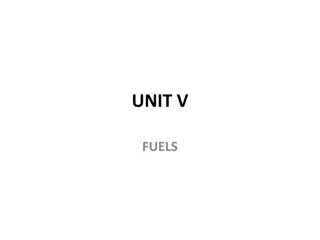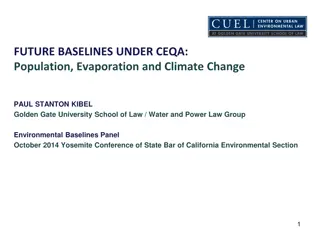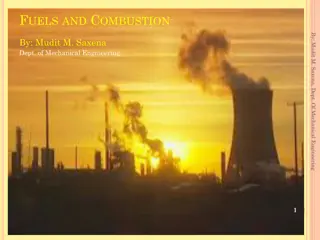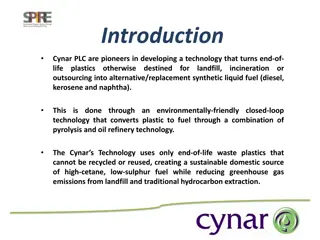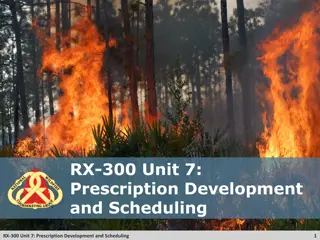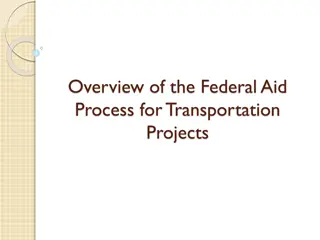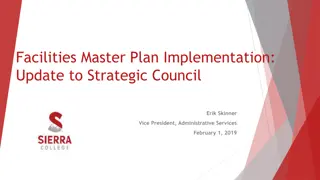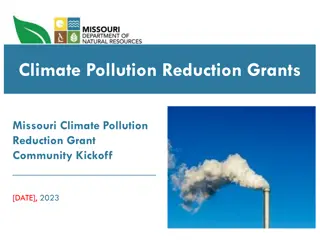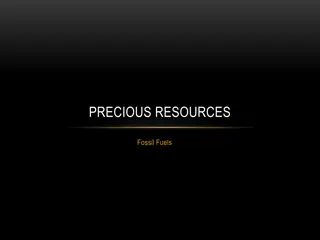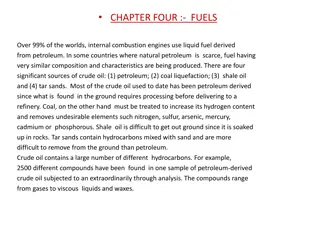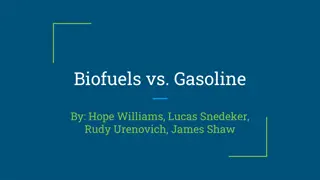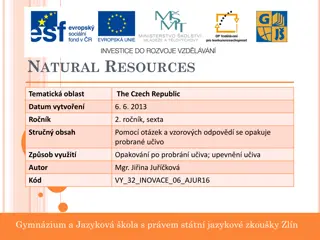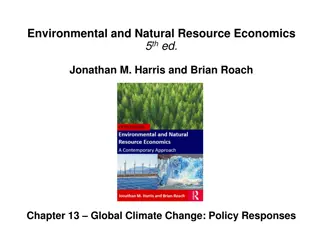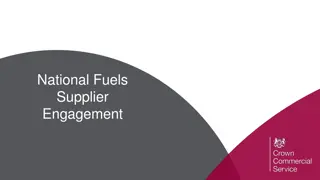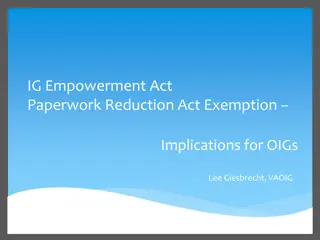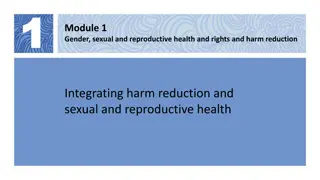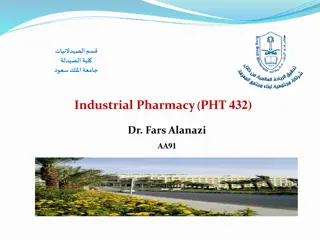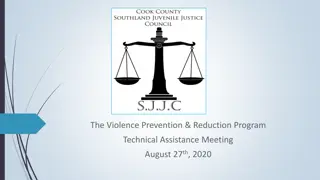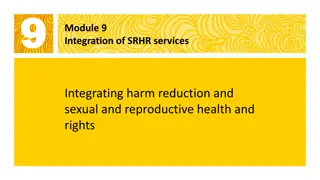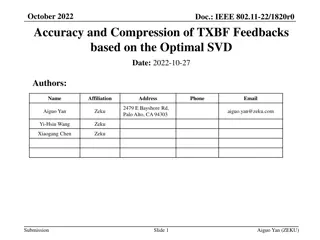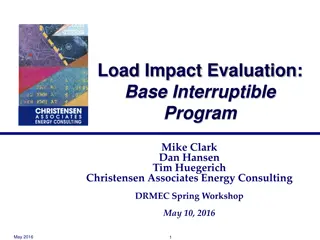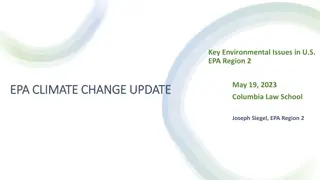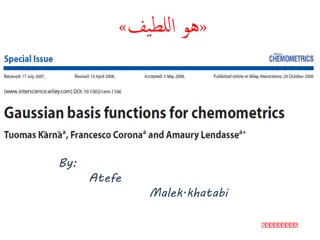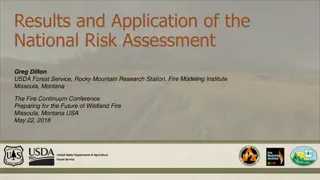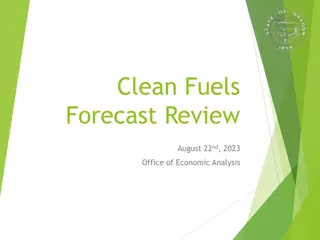Understanding the CEQA Process for Prescribed Herbivory in Fuels Reduction
This information provides insights into using the CEQA process for Prescribed Herbivory treatments, highlighting the importance of full disclosure, environmental impact reports, and the determination of necessary documents for completing projects. It outlines the steps involved, from project evaluation to agency consultations, addressing potential impacts on the environment and the decision-making process. The content emphasizes the key role of CEQA in informing the government and the public about environmentally damaging effects and ways to mitigate them.
Download Presentation

Please find below an Image/Link to download the presentation.
The content on the website is provided AS IS for your information and personal use only. It may not be sold, licensed, or shared on other websites without obtaining consent from the author. Download presentation by click this link. If you encounter any issues during the download, it is possible that the publisher has removed the file from their server.
E N D
Presentation Transcript
Prescribed herbivory for fuels reduction Using the CEQA process for Prescribed Herbivory treatment. Len Nielson Staff Chief Prescribed Fire and Environmental Protection Len.Nielson@fire.ca.gov
CEQA process for Prescribed Herbivory California Environmental Quality Act (CEQA) CAL FIRE CEQA determination leading to the right document ????
Prescribed Herbivory The Purpose of CEQA: Full Disclosure Inform the government and the public about the potential environmentally damaging effects of its actions. Required conclusion of possible or potential impacts to the environment. Identify ways to avoid or reduce environmental damage. Allow for public comment PRC PRC 21002, 14 CCR 15002(a)
Prescribed Herbivory for fuels reduction Environmental Impact Report (EIR) Programatic Environmental Impact Report (PEIR) Mitigated Negative Declaration (MND) Negative Declaration (ND) Notice of Exemption (NOE) Nothing ( )
CEQA for Prescribed Herbivory Process for determining which type of document you will need to complete the project. The big secret is that the process is the same.
C CE EQ QA A P Pr ro oc ce es ss s F Fl lo ow w C Ch ha ar rt t Not a Project Public Agency determines whether the activity is a project Project Project is ministerial Public agency determines if the project is exempt effect No possible significant Statutory exemption Categorical exemption Not Exempt CEQA Flow Chart Public agency evaluates project to determine if there is a possibility that the project may have a significant effect on environment Possible significant Notice of Exemption may be filed No further action Required under CEQA Determination of lead agency where more than one public agency is involved RESPONSIBLE AGENCY LEAD AGENCY Lead agency prepares initial study Respond to informal consultation Consultation Lead agency decision to prepare EIR or Negative Declaration EIR Negative Declaration Lead agency sends Notice of Preparation to responsible agency Respond to Notice of Preparation as to contents of draft EIR Consultation Lead agency prepares draft EIR Lead agency files Notice of Completion and gives public notice of availability of draft EIR Lead agency gives public notice of availability of Negative Declaration Comments on adequacy of draft EIR or Negative Declaration Consultation Public Review Peri od* Public Review Period* Lead agency prepares final EIR including responses to comments on draft EIR Decision-making body considers final EIR or Negative Declaration prepared by lead agency Consideration and approval of final EIR by decision-making body Consideration and approval of Negative Declaration by decision-making body Findings on feasibility of reducing or avoiding significant environmental effects Findings on feasibility of reducing or avoiding significant environmental effects Decision on permit Decision on project State Agencies Local Agencies State Agencies Local Agencies File Notice of Determination with Office of Planning & Research File Notice of Determination with Office of Planning & Research File Notice of Determination with County Clerk File Notice of Determination with County Clerk Source: California Environmental Resources Evaluation System, http://ceres.ca.gov/topic/env_law/ceqa/flowchart/index.html * The public review and comment period shall not be less than 30 days and nor should it be longer than 60 days, per the CEQA Guidelines at http://ceres.ca.gov/topic/env_law/ceqa/guidelines/
CEQA review process Project description Preliminary analysis C CE EQ QA A P Pr ro oc ce es ss s F Fl lo ow w C Ch ha ar rt t Not a Project Public Agency determines whether the activity is a project Project Project is ministerial Public agency determines if the project is exempt effect No possible significant Statutory exemption Categorical exemption Not Exempt Public agency evaluates project to determine if there is a possibility that the project may have a significant effect on environment Possible significant Notice of Exemption may be filed No further action Required under CEQA Determination of lead agency where more than one public agency is involved Preliminary determination for an Initial Study RESPONSIBLE AGENCY LEAD AGENCY Lead agency prepares initial study Respond to informal consultation Consultation Lead agency decision to prepare EIR or Negative Declaration EIR Negative Declaration Lead agency sends Notice of Preparation to responsible agency Respond to Notice of Preparation as to contents of draft EIR Document type determined Consultation Lead agency prepares draft EIR Lead agency files Notice of Completion and gives public notice of availability of draft EIR Lead agency gives public notice of availability of Negative Declaration Comments on adequacy of draft EIR or Negative Declaration Consultation Public Review Peri od* Public Review Period* Lead agency prepares final EIR including responses to comments on draft EIR Decision-making body considers final EIR or Negative Declaration prepared by lead agency Consideration and approval of final EIR by decision-making body Consideration and approval of Negative Declaration by decision-making body Document process Findings on feasibility of reducing or avoiding significant environmental effects Findings on feasibility of reducing or avoiding significant environmental effects Decision on permit Decision on project State Agencies Local Agencies State Agencies Local Agencies File Notice of Determination with Office of Planning & Research File Notice of Determination with Office of Planning & Research File Notice of Determination with County Clerk File Notice of Determination with County Clerk Source: California Environmental Resources Evaluation System, http://ceres.ca.gov/topic/env_law/ceqa/flowchart/index.html * The public review and comment period shall not be less than 30 days and nor should it be longer than 60 days, per the CEQA Guidelines at http://ceres.ca.gov/topic/env_law/ceqa/guidelines/
CEQA process C CE EQ QA A P Pr ro oc ce es ss s F Fl lo ow w C Ch ha ar rt t Not a Project Public Agency determines whether the activity is a project Project Project is ministerial Public agency determines if the project is exempt effect No possible significant Statutory exemption Categorical exemption Not Exempt Public agency evaluates project to determine if there is a possibility that the project may have a significant effect on environment Possible significant Notice of Exemption may be filed No further action Required under CEQA Determination of lead agency where more than one public agency is involved RESPONSIBLE AGENCY LEAD AGENCY Lead agency prepares initial study Respond to informal consultation Consultation Lead agency decision to prepare EIR or Negative Declaration EIR Negative Declaration Lead agency sends Notice of Preparation to responsible agency Respond to Notice of Preparation as to contents of draft EIR Consultation Lead agency prepares draft EIR Lead agency files Notice of Completion and gives public notice of availability of draft EIR Lead agency gives public notice of availability of Negative Declaration Comments on adequacy of draft EIR or Negative Declaration Consultation Public Review Peri od* Public Review Period* Lead agency prepares final EIR including responses to comments on draft EIR Decision-making body considers final EIR or Negative Declaration prepared by lead agency Consideration and approval of final EIR by decision-making body Consideration and approval of Negative Declaration by decision-making body Findings on feasibility of reducing or avoiding significant environmental effects Findings on feasibility of reducing or avoiding significant environmental effects Decision on permit Decision on project State Agencies Local Agencies State Agencies Local Agencies File Notice of Determination with Office of Planning & Research File Notice of Determination with Office of Planning & Research File Notice of Determination with County Clerk File Notice of Determination with County Clerk Source: California Environmental Resources Evaluation System, http://ceres.ca.gov/topic/env_law/ceqa/flowchart/index.html * The public review and comment period shall not be less than 30 days and nor should it be longer than 60 days, per the CEQA Guidelines at http://ceres.ca.gov/topic/env_law/ceqa/guidelines/
CEQA process dictates what document is appropriate Notice of Exemption (NOE) Negative Declaration (ND) Mitigated Negative Declaration (MND) Environmental Impact Report (EIR) Programmatic Environmental Impact Report (PEIR) PEIR used by the Department Chaparral Management Plan (aka Vegetation Management Plan) California Vegetation Treatment Plan (CALVTP) California Forest Improvement Program (CFIP)
Prescribed herbivory for fuels reduction What is the magic formula for creating the Notice of Exemption? Preliminary Analysis leads to Initial Study There really is not supposed to be any magic . Will there be any Significant Impacts??????
Significant Impacts (15126) 15126. CONSIDERATION AND DISCUSSION OF ENVIRONMENTAL IMPACTS All phases of a project must be considered when evaluating its impact on the environment: planning, acquisition, development, and operation. Significant Environmental Effects (15126.2) Mitigation measures proposed to minimize significant effects (15126.4) Considerations and discussion of alternatives to the project (15126.6)
Significant effects A direct physical change in the environment. An indirect physical change in the environment is a physical change in the environment which is not immediately related to the project, but which is caused indirectly by the project.
Initial Study The environmental review that determines whether project activities will cause a significant effect on the environment. 2020_ceqa_book.pdf (califaep.org) 14 CCR 15365 13
Initial Study If the activity is subject to CEQA and not exempt, the lead agency will conduct an initial study. The initial study: Is based on CEQA Guidelines Appendix G. May be prepared by the lead agency, project proponent, or contractor. Considers all aspects of the project (planning, implementation, operation, maintenance). Determines if a significant effect on the environment will occur. Determines if the project needs modification. Determines the type of environmental document. 14 CCR 15063 14
Initial Study Things to consider for most projects for the Preliminary Environmental Analysis for the Initial Study: California Natural Diversity Data Base (CNDDB) Prehistoric and or Historic sites within the project or near the project. California Historic Resources Information System (CHRIS) Known resources of concern Special flowers or species or politics Appendix G Environmental Checklist Form
Environmental Impact Analysis The resources that generally apply and must be addressed fall into two groups: Easier-to-Address: Aesthetics Air Quality Greenhouse Gas Emissions Hydrology and Water Quality Recreation Utilities / Service Systems Mineral Resources Harder-to-Address: Biological Resources Agriculture and Forest Resources. Geology and Soils. Hazards and Hazardous Materials. Noise Wildfire Transportation Energy Cultural/Tribal Cultural Resources 16
Preliminary Analysis First determine if the activity is subject to CEQA An activity is not subject to CEQA if: The activity does not involve the exercise of discretionary powers by a public agency. The activity will not result in a direct or reasonably foreseeable indirect physical change in the environment. The activity is not a project. If the activity is a project subject to CEQA, then the lead agency will review the most appropriate document. 14 CCR 15060(c)
Scenarios for Prescribed Herbivory One of the most important things in project design is the project description. It should have the: Who, What, Where, Why, How, and When You should have a good understanding of the project from that first review. Everything about the life of that project should be known or planned for.
Prescribed Herbivory Scenario -1 The local Fire Safe council is going to be using goats to reduce the vegetation on a small area in the foothills just outside the Clearlake next to State Highway 20. The plan is to use 20 goats for three weeks on three acres. The project will begin in late spring and continue for approximately four weeks. The project is intended to reduce roadside fuels to prevent roadside fires in the area where they are known to occur frequently. The goats will have a Shepard 24 hours a day 7 days a week and the temporary fencing will only be installed one week prior to the goats arrival and removed one week after moving the goats to a new project.
Constraints For preliminary analysis- what resources were considered that may cause constraints for the project? Biological plants or animals? Cultural Resource? Traffic?
Prescribed Herbivory Do you need any mitigations ? If you do, then you just turned down the path to something other then the NOE. But have you considered designing your project to avoid potential constraints?
Prescribed Herbivory Scenario -2 Using goats to reduce the vegetation on a small area in the town of Auburn in the historic district. Near Highway 49, a scenic highway. The plan is to use 20 goats for three weeks on three acres. The project will begin in late spring and continue for approximately four weeks. The project is intended to reduce roadside fuels to prevent roadside fires in the area where they are known to occur frequently. The goats will have a Shepard 14 hours a day 5 days a week and the temporary fencing will only be installed one week prior to the goats arrival and removed within one week of completion of the project. The known mine in the area will closed to prevent access to the goats.
Constraints For preliminary analysis- what resources were considered that may cause constraints for the project? Biological plants or animals? Cultural Resource? Traffic? Scenic Highway? Other?
Environmental Impact Analysis The resources that generally apply and must be addressed fall into two groups: Easier-to-Address: Aesthetics Air Quality Greenhouse Gas Emissions Hydrology and Water Quality Recreation Utilities / Service Systems Mineral Resources Harder-to-Address: Biological Resources Agriculture and Forest Resources. Geology and Soils. Hazards and Hazardous Materials. Noise Wildfire Transportation Energy Cultural/Tribal Cultural Resources 24
Prescribed Herbivory Do you need any mitigations ? If you do, then you just turned down the path to something other then the NOE. But have you considered designing your project to avoid potential constraints? Now what if you can t avoid using a mitigation like
Prescribed Herbivory Scenario -3 Using goats to reduce the vegetation along the scenic highway near the fragile wetland created from the highway bypass near the town of Willits. The plan is to use 20 goats for three weeks on three acres. The project will begin in late spring and continue for approximately four weeks. The project is intended to reduce roadside fuels to prevent roadside fires in the area where they are known to occur frequently. The goats will have a Shepard 8 hours a day 3 days a week and the fencing will only be installed one week prior to the goats arrival and left in place for future grazing.
Constraints For preliminary anyisis- what resources were considered that may cause constraints for the project? Biological plants or animals? Cultural Resource? Traffic? Scenic Highway? Other?
Environmental Impact Analysis The resources that generally apply and must be addressed fall into two groups: Easier-to-Address: Aesthetics Air Quality Greenhouse Gas Emissions Hydrology and Water Quality Recreation Utilities / Service Systems Mineral Resources Harder-to-Address: Biological Resources Agriculture and Forest Resources. Geology and Soils. Hazards and Hazardous Materials. Noise Wildfire Transportation Energy Cultural/Tribal Cultural Resources 28
Prescribed Herbivory Do you need any mitigations ? If you do, then you just turned down the path to something other then the NOE. But have you considered designing your project to avoid potential constraints? Now what if you can t avoid using a mitigation like
How to justify using Prescribed Herbivory? It was done here in the past with no impacts. The carrying capacity of the area is well below the maximum. You have considered all of the possible resources at risk and have no possible impacts. Social licence through education and awareness to use Prescribed Herbivory as a preferred option. Range Management Plan Done by a Certified Range Manager (CRM)
Questions? Len Nielson Staff Chief Prescribed Fire and Environmental Protection Len.Nielson@fire.ca.gov 559-341-7834


